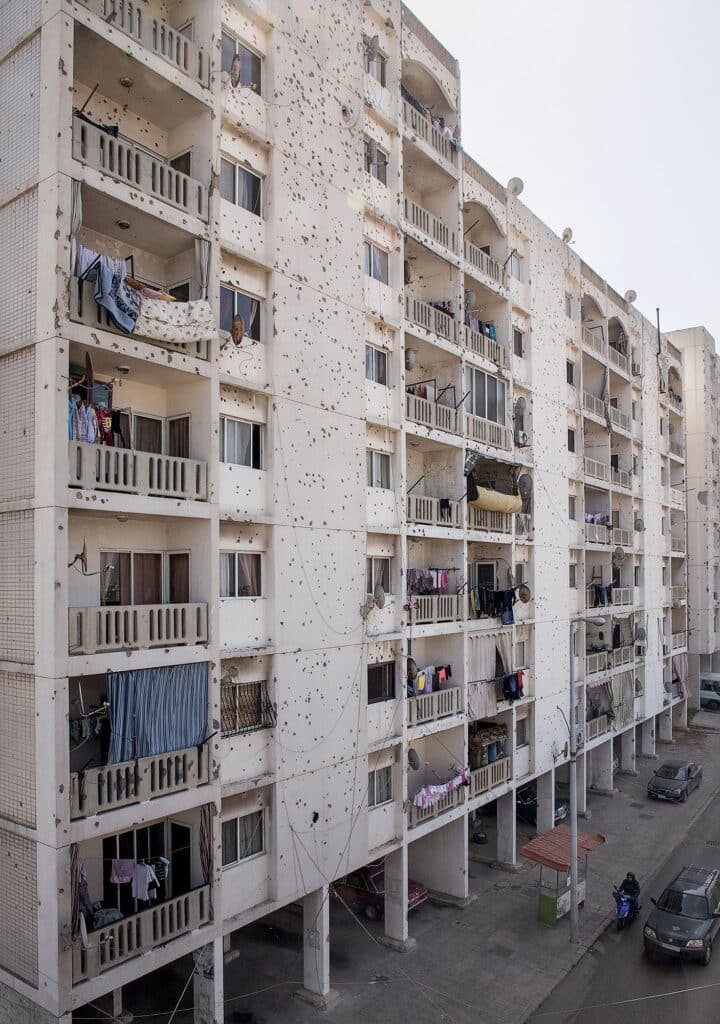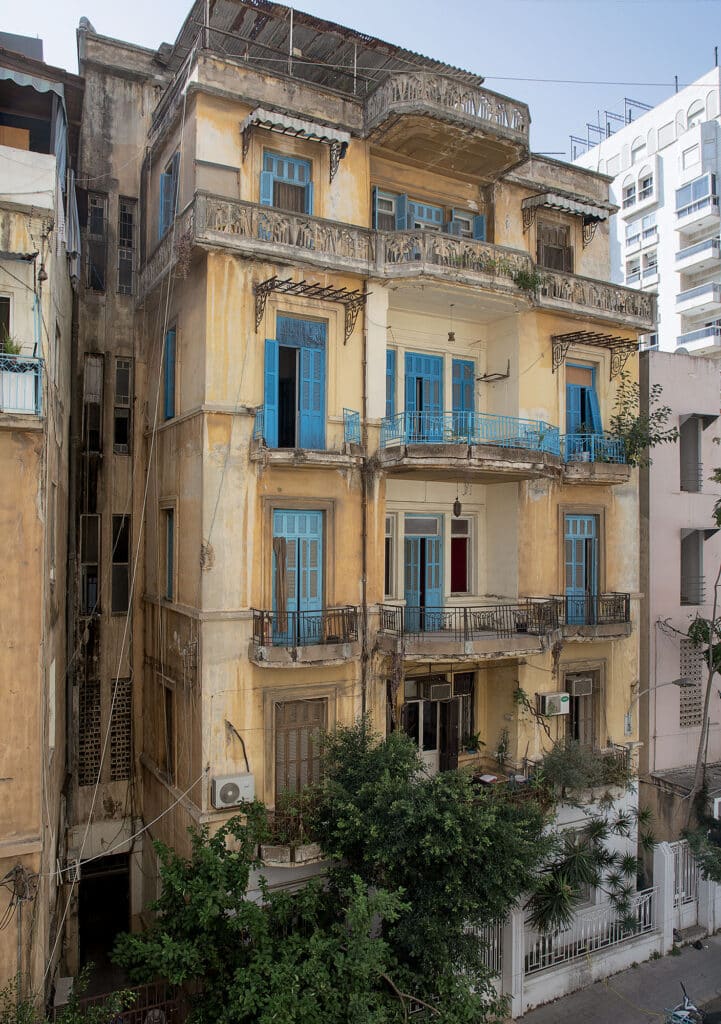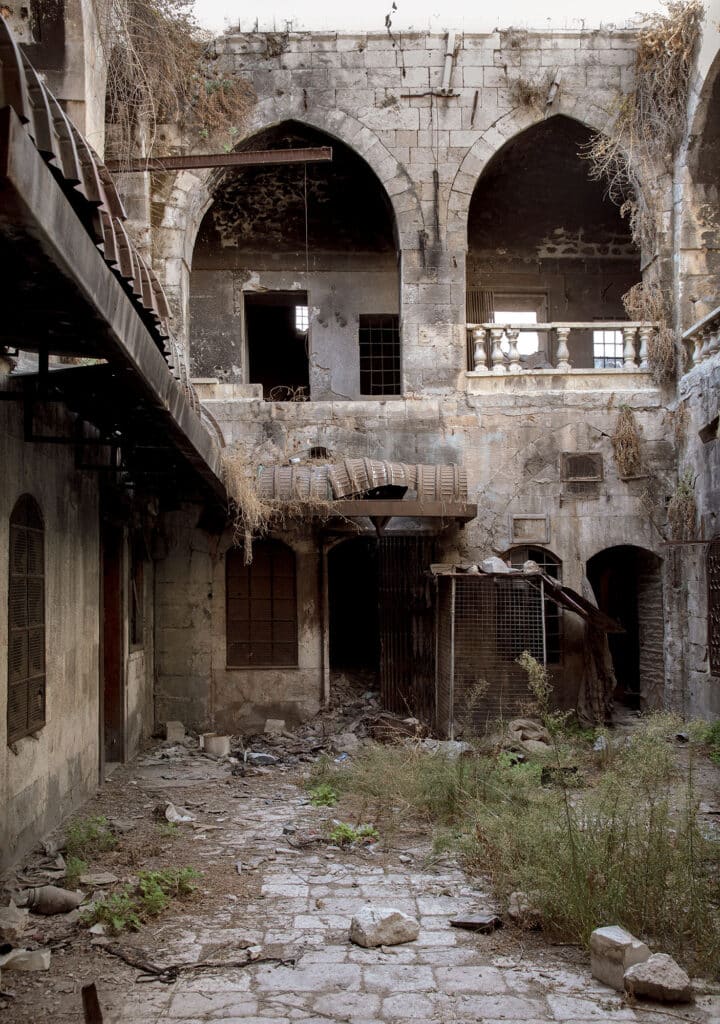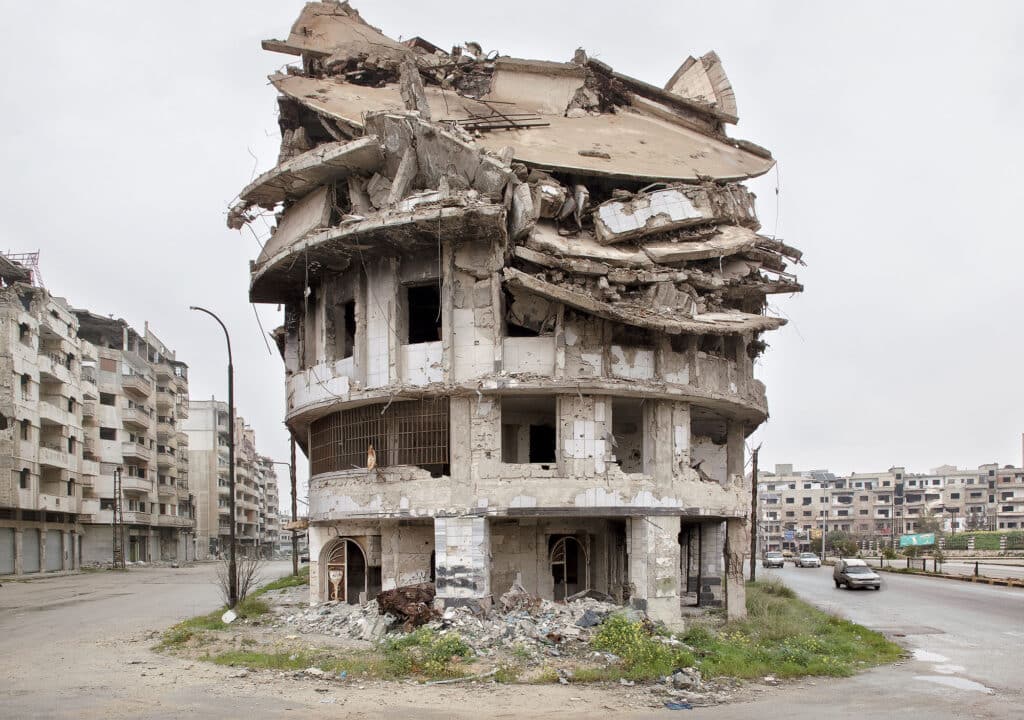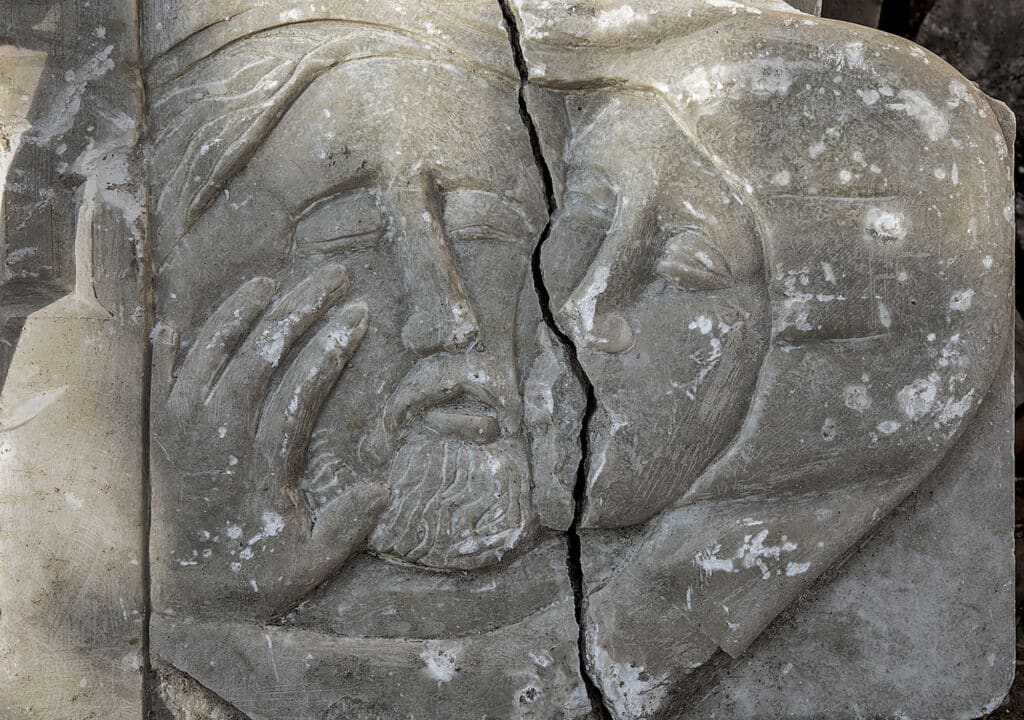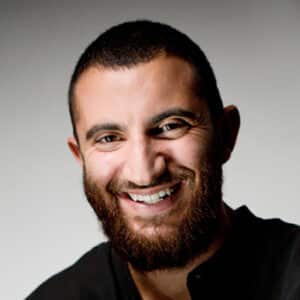Leafing through the new book, La ruine de sa demeure, published by Atelier EXB, by French photographer Mathieu Pernot, your heart sinks at the evidence of tragedies that have befallen Lebanon, Syria, and Iraq in recent years. Pulling at the reader’s heartstrings, however, was not the goal of the project. Mathieu Pernot wanted above all to retrace the trip that his grandfather had made as a tourist in 1926 and which he documented in a family album. “I started from scratch, without the slightest idea of the difficulties I was going to face or the ability to visit certain territories. The only material I was sure of were the family archives.” The first page of the album featured at the beginning of his book lists the cities his grandfather visited: “Beirut. Tripoli. Baalbek. Damascus. Homs. Kalaat-el-Hosn. Palmyra.”
It all started in Beirut, in Mathieu Pernot’s father’s family apartment which the photographer was able to rent in turn. “My father grew up in an apartment his grandparents rented in the Sanayeh district of Beirut, between 1940 and 1958 (…) I was able to spend a few nights there during my first trip.” This was 2019 and the Lebanese capital still bore the scars of the fifteen-year civil war (1975–1990). Mathieu Pernot photographed the orderly interior of the apartment. Alongside his own shots, he shows vintage black-and-white family photos, taken on the balcony of the apartment, in which his father, still a toddler, is posing with his parents.
Less than a year later, in August 2020, Mathieu Pernot returned to Beirut, but the building was no longer accessible. A chemical explosion, known as the August 4 Beirut blast, had devastated the city. The photographer visited the port where the explosion took place and the surrounding residences. Charred ships, piles of wrecked cars, shattered interiors: the city was unrecognizable. Once again Beirut lays in ruins. “The railing of the balcony against which my father posed as a child had fallen into the street and was used to block the entrance to the building.” Mathieu Pernot photographed the scene. “The large and the small history were intertwined, and history had come full circle.”
Between his two stays, Mathieu Pernot retraced his grandfather’s journey. First he traveled to the north of Lebanon, to Tripoli, the country’s second largest city which was at the heart of the conflict between the Alawites and the Sunnis in 2011–2014. The photographer began taking portraits of the inhabitants among bullet-ridden buildings, something he hadn’t considered at first. “I thought I would only photograph the buildings, and did not imagine taking portraits, but the presence of the inhabitants quickly became a necessity. I photographed them in their environment, from a certain distance, by looking how people inhabit the space.”

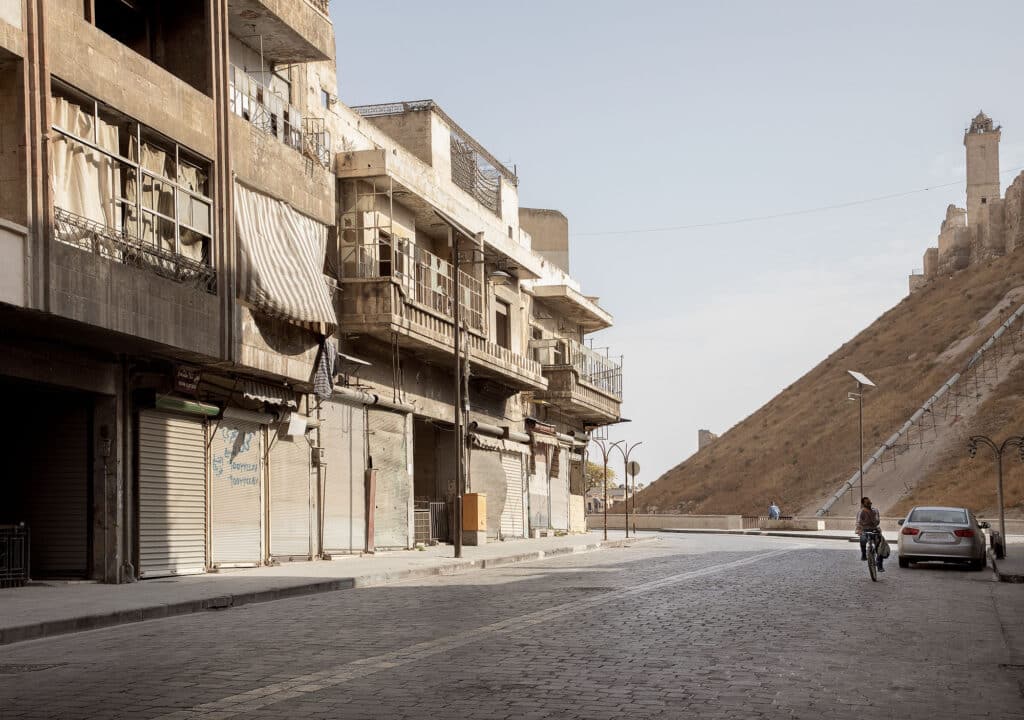
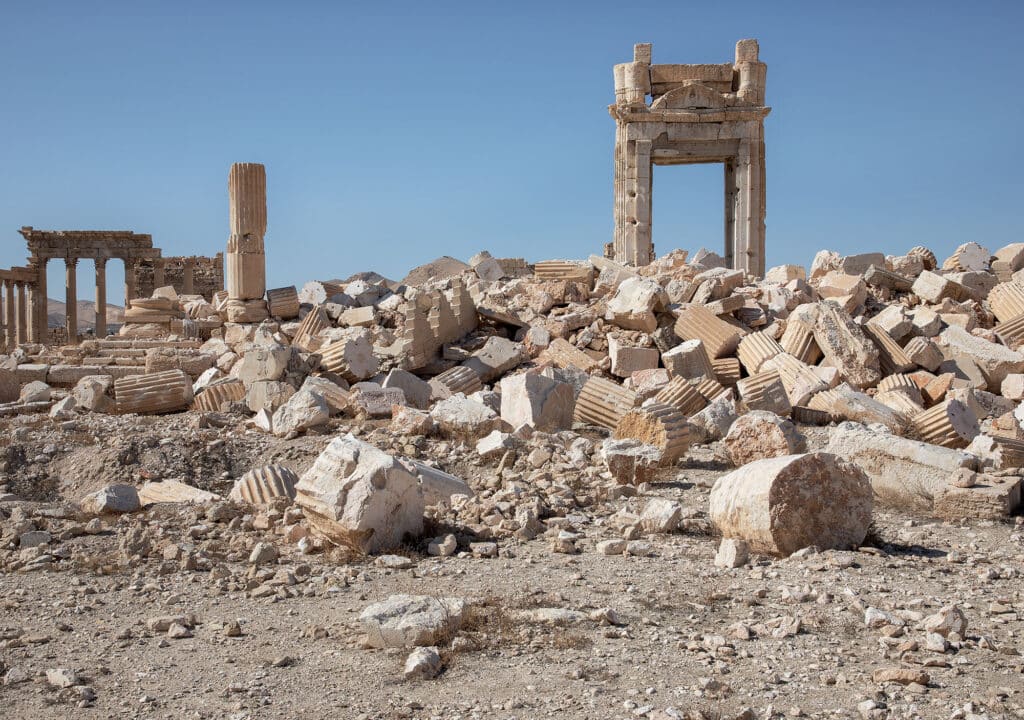
He followed the same approach in Syria. Apart from downtown Damascus, which was spared, Mathieu Pernot discovered a country ravaged by over ten years of war. Next to the mutilated buildings and portraits of the inhabitants, one face is found in almost every photo, that of the Syrian dictator. “The portrait of Bashar Al-Assad is everywhere and is deployed in every imaginable way in the form of stickers, stencil paintings, posters in the street, or sunscreens in cars. You can hardly take a step without running into his portrait and you feel like you’re being followed. In a way, the excessive deployment of this image makes up the inverted symmetry of ISIS’s iconoclastic project to make all forms of representation disappear.”
Leaving Syria, Mathieu Pernot slightly extended his grandfather’s itinerary. He traveled to Iraq, where ISIS had razed everything in their path, for example in Nimrud and Mosul. Contemporary ruins, ancient ruins, and ruins of ruins succeed one another in the photographer’s work. “The ruins photographed in this book span over 3000 years of history. The intention is not to create an effect; it’s just the observation of what is there, in this region of the world where the origins of our history and its tragic end seem to exist side by side.” Among the debris of Mosul’s city-center, Pernot came across a photograph of a boy holding a little girl in his arms. “This image, which survived the bombing of the city, moved me. … It seemed important to me to summon images made by those who had lived in these places and which showed a kind of normality.” This image, as well as other anonymous photographs, conclude his project in the desire to testify that life will always endure.
Mathieu Pernot, La ruine de sa demeure, Atelier EXB, 216 pp, €45. With texts by the reporter Hala Kodmani and an interview by Etienne Hatt.
Exhibition: “Mathieu Pernot: La ruine de sa demeure”, March 8 to June 19, 2022, Fondation Henri Cartier-Bresson, 79 rue des Archives, 75003 Paris.



